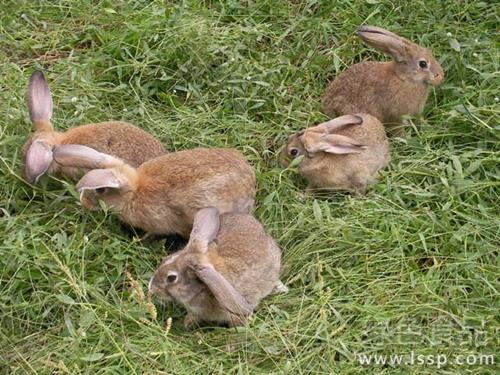Technical essentials of fattening winter geese to catch up with the Spring Festival listing
Winter goose refers to the goslings hatched from the Beginning of Winter to the Winter Solstice. The goslings will enter the middle goose stage when they reach the age of 40 days. At this time, the goslings will be fattened for 15 to 30 days, gain 1.5 to 3.5 kilograms, and be on the market during the Spring Festival, with good economic benefits. Enter the goose period goslings long muscle, long bones, commonly known as "half-winged goose", can be fattened. Fattening methods:

Winter goose
1. Fattening in captivity. The fence is made of bamboo or Reed stalks and enclosed into a small fence, each containing 3 goose and 5 geese. The size of the fence is not more than twice the size of the goose, and the height allows the goose to stand without holding its head high. Or use wood bamboo and Reed mats to build scaffolding with high 50~60cm to remove feces. Outside the food trough and drinking fountain, leave cracks in the fence to allow geese to feed and drink. Breed separately according to the size, strength and weakness of geese. In captivity, the goose house is required to be quiet, keep warm from the wind, do not graze and restrict activities to reduce consumption. In feeding, the feed should be diversified and mixed with fine green, which can be fed to rice bran, chopped rice, corn, blighted grain, vegetable leaves and other grain scraps, plus about 6% cakes and 0.3% salt. Fine material is ground, mixed into wet material and fed 5-7 times a day and 1-2 times in the evening. Feed enough food and water and let them eat and drink. In addition, adding 19 grams of manganese sulfate, 17 grams of zinc sulfate, 12 grams of ferrous sulfate, 2 grams of copper sulfate, 0.1 grams of potassium iodide and 0.1 grams of cobalt chloride in 100 kg concentrate can promote its weight gain. The above trace element compounds should be mixed evenly to prevent individual geese from overfeeding and poisoning.
2. Artificial forced fattening method. Corn, broken rice, rice bran and other powder and trace elements can be mixed and mixed with water to make walnut strips, which can be artificially filled into the goose esophagus. When filling, the left hand grabs the goose head, opens the goose mouth, clamps the goose body on both knees, dips the feed strip in the water in the right hand, and inserts the feed into the goose esophagus with the index finger. For each piece, gently push the goose down the goose neck and swallow it. Feed the goose 4 or 6 times a day and once at night. The amount of feeding depends on the weight and digestibility of geese. One hour before filling, grooves appear in the swollen part of the goose's esophagus, which is normal for digestion; it appears earlier than one hour before filling and needs to be fed more; if it appears one hour later, it needs to be reduced or delayed. Be careful not to fill the trachea and ensure the supply of clean drinking water.
In fattening geese, the wings are small, the subcutaneous fat of both sides of the body is thickened, and the skin slides to lower fatness; chestnut lumps are medium fatness; they feel firm and elastic with light pressure by hand. To achieve high-grade fat, body subcutaneous fat hypertrophy, tail vertebrae, chest plump, wing and feather root is transparent (commonly known as tube), should be slaughtered and sold immediately.
- Prev

Prevention and treatment of common diseases of rabbits in winter with colds, pneumonia, diarrhea, scabies and constipation
Prevention and treatment of common diseases of rabbits in winter with colds, pneumonia, diarrhea, scabies and constipation
- Next

Symptoms and treatment of heat stroke in sheep
Heat syndrome in sheep is the general name of solar radiation disease and heat radiation disease. Solar radiation disease is an acute disease of cerebral and meningeal congestion caused by direct sunlight on the head of sheep; heat radiation disease is a disease of central nervous system disorder caused by heat accumulation in the body due to humid and muggy weather, heat production of the body is greater than heat dissipation. The expert relieves the disease. Etiology of ⑴: solar radiation sickness is due to the scorching sun in the head, so that the head overheating, resulting in brain and meningeal congestion. Heat radiation sickness is due to high external temperature, damp, muggy, crowded, narrow in the sheep house, or poor ventilation and heat during vehicle and boat movement.
Related
- On the eggshell is a badge full of pride. British Poultry Egg Market and Consumer observation
- British study: 72% of Britons are willing to buy native eggs raised by insects
- Guidelines for friendly egg production revised the increase of space in chicken sheds can not be forced to change feathers and lay eggs.
- Risk of delay in customs clearance Australia suspends lobster exports to China
- Pig semen-the Vector of virus Transmission (4)
- Pig semen-the Vector of virus Transmission (3)
- Five common causes of difficult control of classical swine fever in clinic and their countermeasures
- Foot-and-mouth disease is the most effective way to prevent it!
- PED is the number one killer of piglets and has to be guarded against in autumn and winter.
- What is "yellow fat pig"? Have you ever heard the pig collector talk about "yellow fat pig"?

